
Bezos Earth Fund Boosts Marine Conservation with $24.5 million
to protect coastal ecosystems as part of a plan to create the planet's first cross-border marine biosphere reserve, its head of nature told Reuters.The four grants from the Bezos Earth Fund are intended to help local communities and organisations protect key marine areas in Costa Rica, Panama, Colombia, and Ecuador.The grants form part of a plan to give $1 billion towards the world's goal of protecting 30% of the planet's land and oceans by 2030. As part of the 'Protecting Our Planet Challenge' with 10 other philanthropies, the group of donors is aiming to provide $5 billion over
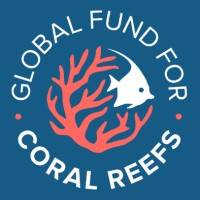
GFCR Partners Pledge Over $25m for Coral Reefs
;comes at a make-or-break moment for the planet’s coral ecosystems and the more than one billion people who rely on them for food security, livelihoods, and coastal protection. It also marks a step forward in the GFCR’s final capitalization effort, launched at COP16 in Cali, Colombia. The urgency is stark. The fourth global coral bleaching event—now affecting an estimated 84 percent of the world’s reefs—is being driven by record-breaking marine heatwaves and prolonged thermal stress. Without swift intervention, scientists warn of irreversible coral mortality
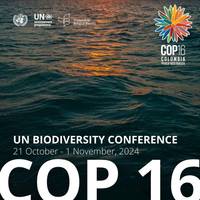
COP16 Biodiversity Summit Gridlocked
additional $163 million to the Global Biodiversity Framework Fund on Monday, dubbed the summit's "finance day."The fund was established to help realize the goals laid out in the landmark 2022 Kunming-Montreal Global Biodiversity Framework, aimed at ending nature loss by 2030. COP16 in the Colombian mountain town of Cali is tasked with implementing that agreement.Advocacy groups said the pledges - which brings the total raised by the fund to about $400 million - fell far short of the billions of dollars envisioned for the fund."It's very little. We are talking about millions that
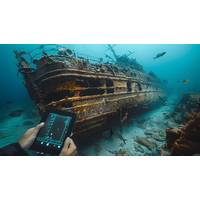
Billions in Lost Treasure: How Modern Technology Is Revealing Hidden Riches from the Depths!
and silver remains lost.Flor de la Mar is another prize that remains missing after it sank off Sumatra coast in 1511 carrying an immense treasure from Malacca Sultanate. Believed to contain gold, silver and jewels captured during its conquest.The San Jose is yet another lost prize, having sunk off of Colombia during a battle between Britain and Spain in 1708. Carrying an estimated $17 billion worth of gold, silver, and emeralds from South America to Spain when she went down, makes this shipwreck one of the world's most valuable unrecovered treasures. Although located by Colombian officials in 2015
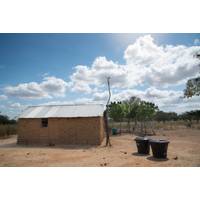
OPINION: Potable Water “on-the-cheap” in La Guajira, Colombia?
potable water is plentiful, it is often taken for granted. But it should not be forgotten that potable water is indispensable for human life because billions people worldwide are experiencing fresh water shortages. The shortages are certain to worsen in the coming decades.The humanitarian crisis in Colombia’s La Guajira province (about 600 miles north of Bogota) is ample testimony. Between Northeast Colombia and Northwest Venezuela, La Guajira is a dry and windy peninsular desert with a breathtaking ochre and aquamarine coastline. The province is (about half of the size of New York) mainly populated
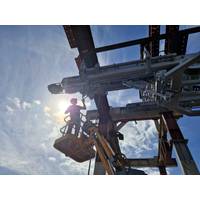
Vestdavit Hits New Sales Record as Orders Increase 76% From Last Year
davit systems with proven reliability for navies around the world, including the US, UK and Australia.While the U.S. is the company’s biggest naval market, its davits are in use by the vast majority of navies within the Nato alliance and it also secured its first naval orders in Canada and Colombia last year, according to Isaksen.One of the sales highlights for the company last year was securing its single biggest-ever order to the tune of $5.84 million (NOK 62 million), which was awarded by an undisclosed Nato naval customer for multiple davits to be installed on three newbuild vessels.Vestdavit
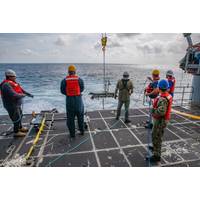
Wave Glider Launched from a US Navy Fast Transport Ship
mariners and civilian contractors in a collaborative effort to successfully launch a Liquid Robotics Wave Glider unmanned surface vehicle (USV) from expeditionary fast transport ship USNS Burlington (T-EPF 10), June 30, 2023.The launch took place during the Burlington’s transit to Cartagena, Colombia ahead of the start of UNITAS LXIV. Colombia is this year’s host for UNITAS, longest-running annual multinational maritime exercise in the world, scheduled to start on July 11, 2023.“UNITAS is so unique and full of opportunities for innovation, providing an ideal location to experiment
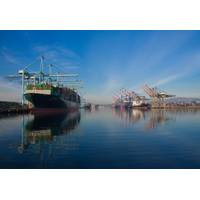
Wanted: A Sea-change in Climate Finance for Oceans
that they can move from being $50-$150 million funds to $300 million, $1 billion?”Sack emphasizes the need for equity and accountability to be built into any ocean investment product, “blue carbon” being one of them. One particular mangrove conservation project in Cispatá Bay, Colombia, is often cited as a good example of what high quality means in this space, where communities as well as carbon are factored in. The project, on Colombia’s Caribbean coast, was the first to measure and monetize the carbon that mangroves sequester in their soil, using methodology developed
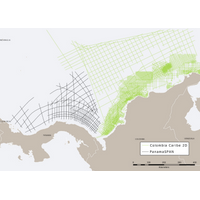
ION Geophysical Reprocesses 62,000 km of Colombia's Vintage Offshore Seismic Data
Offshore seismic data company ION Geophysical has completed reprocessing of the prestack time and depth imaging of over 62,000 km of legacy data acquired from the National Hydrocarbon Agency of Colombia (ANH) for its Colombia Caribe 2D reprocessing program. The Caribe Colombia Reprocessing project is a 2D multi-client program designed to improve understanding of the area and tie all main offshore wells.According to ION Geophysical, the multi-client reprocessing provides a consistent parameterization of 18 surveys with vintages ranging from 1982 through 2014, and, combined with its PanamaSPAN and

 August 2025
August 2025





